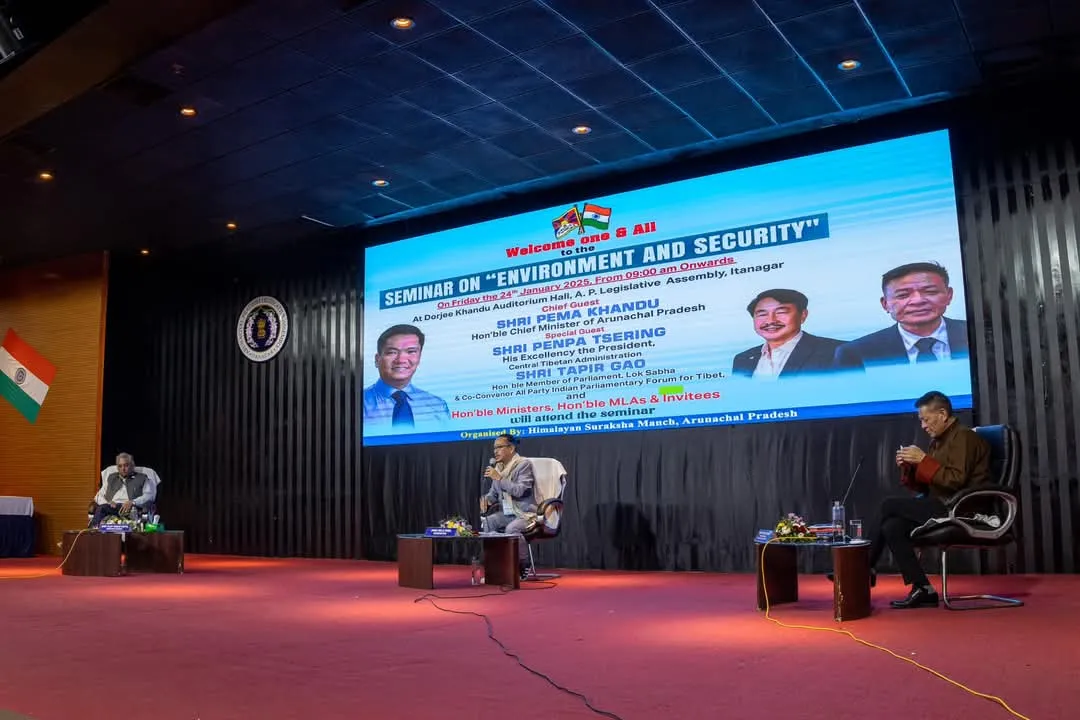Itanagar, Jan 25:Arunachal Pradesh Chief Minister Pema Khandu has issued a stark warning regarding China’s plans to construct the world’s largest hydropower dam on the Yarlung Tsangpo River, which flows into India as the Siang and later becomes the Brahmaputra River in Assam.
Speaking at the ‘Environment and Security’ seminar at the Dorjee Khandu Auditorium on Friday, Khandu warned that the 60,000 MW hydropower project could have catastrophic effects on water security, agriculture, and the livelihoods of millions in Northeast India and Bangladesh.
Khandu emphasized that the dam would give China control over the timing and volume of water released downstream, potentially leading to severe droughts or devastating floods. During dry seasons, the Siang and Brahmaputra Rivers could dry up, severely disrupting agriculture and local communities.
In contrast, sudden water releases could cause significant flooding during the monsoon season, destroying crops, infrastructure, and displacing entire communities.
The Chief Minister also expressed concern over China’s continued exploitation of Tibet’s natural resources, warning that the environmental degradation of Tibet could have far-reaching consequences for the entire region.
Khandu stressed that India must take a proactive role in advocating for the protection of Tibet’s environment, as millions of Indians depend on the rivers originating from the Tibetan Plateau.
The seminar, which focused on the environmental and geopolitical risks posed by China’s actions in Tibet, was also addressed by Penpa Tsering, Sikyong (President) of the Central Tibetan Administration, and Lok Sabha member Tapir Gao.
Both leaders condemned China’s human rights violations in Tibet and called for peaceful solutions to the growing environmental and security challenges.
Organized by the Tibet Support Group of Arunachal Pradesh and the Core Group for Tibetan Cause in India, the event brought together lawmakers, environmental experts, and community leaders to discuss the urgent need for collaborative efforts to manage shared water resources in Asia and prevent further environmental threats.
Also Read: Arunachal: Vantara Rescues 20 Elephants from Exploitative Logging Industry


